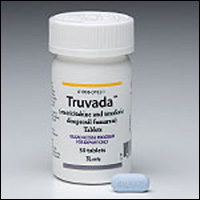 You have been on HIV medications for a few years, and your provider tells you that you are doing well. Your CD4 is up, your viral load is low or undetectable, and you should be feeling great. But you don't, because you have a protruding abdomen from lipodystrophy associated with HIV and its treatment. You have tried dieting and exercise, but your tummy does not bulge. You worry that everybody looks at you and says, oh, "He has HIV."
You have been on HIV medications for a few years, and your provider tells you that you are doing well. Your CD4 is up, your viral load is low or undetectable, and you should be feeling great. But you don't, because you have a protruding abdomen from lipodystrophy associated with HIV and its treatment. You have tried dieting and exercise, but your tummy does not bulge. You worry that everybody looks at you and says, oh, "He has HIV."
This week I am writing about a new treatment for excess abdominal fat in HIV-infected people with lipodystrophy. It is called Egrifta or tesamorelin. It’s a daily shot that you give yourself which can reduce the belly fat significantly. It is not a treatment for HIV.
Egrifta works by stimulating growth hormone receptors in the pituitary to produce growth hormone, which causes muscle growth and breaks up fat. It is only recommended for reducing excess abdominal fat in HIV-infected persons with lipodystrophy.
The drug was approved by the FDA last year on the basis of two multicenter, randomized, double-blind, placebo-controlled studies in HIV-infected patients with lipodystrophy and excess abdominal fat. Both studies consisted of a 26 week main phase and a 26 week extension phase. In both studies, the abdominal fat, also called visceral adiposity, was reduced by 14-18% in patients continuing Egrifta for twelve months. Improvements in fat in the blood stream, triglycerides, and body image, were also shown.
Tomorrow I will write more about effectiveness of Egrifta.
Egrifta is the only FDA approved treatment for this condition. If you have a big belly from HIV treatment, you might want to ask your provider about Egrifta. It is not a weight loss drug, however.
Bill










